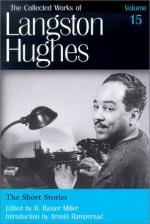|
This section contains 361 words (approx. 1 page at 400 words per page) |

|
1930s: White mob violence and economic depression in the south, and higher-paying industrial jobs in the north, encourage African-Americans to move to northern cities in a vast relocation known as The Great Migration.
1990s: The trend of "white flight" from the cities to the suburbs, which began in the 1970s, remains evident, with blacks making up the majority in most urban centers. Since the 1970s, southern as well as northern cities have become a common destination for African-Americans.
1930s: In the 1930s, public schools, public transportation, and other public places are legally segregated by race throughout the South. A 1935 survey of southern schools finds that an average of $17.04 is spent on each black student as compared to $49.30 for each white student. The NAACP (National Association for the Advancement of Colored People) begins a series of lawsuits in accordance with the Supreme Court's provision that...
|
This section contains 361 words (approx. 1 page at 400 words per page) |

|




